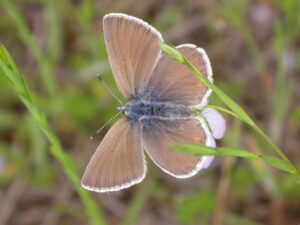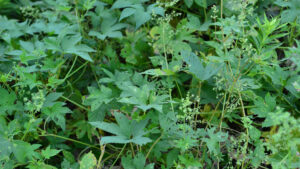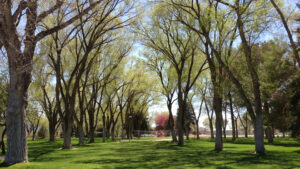By Heather Kharouba, University of Ottawa
Invasive species are often looked upon with suspicion.
From non-native “weeds” to insects and aquatic invaders, introduced (or non-native) species continue to be misunderstood — and consequently often mismanaged.
Stated plainly, the vast majority of intentionally or unintentionally introduced species are not a threat to native ecosystems.
Governments and conservation organizations spend an enormous amount of their time and funding targeting the control of invasive species. Yet, most introduced species removal efforts are ineffective, time-consuming and usually unsuccessful in the long term.
Certainly, some invasive species — such as the zebra mussel or the emerald ash borer — can pose a threat to native habitats and efforts to control their spread are worthwhile. However, the vast majority of introduced species pose no danger at all to native ecosystems and in some cases can even provide new benefits.
Simply put, an over-fixation on demonizing “invasive” species, and controlling their spread, is ultimately futile and limits our understanding.
Unspoken positives
Contemporary conservation practice is complex and biased against introduced species with a focus on maintaining ecosystems as they were. This policy and practice, while well-meaning, is leading us to underestimate the positive roles that introduced species can play in maintaining ecosystem resiliency.
At worst, these policies can even have unintended negative consequences for our ecosystems.

For example, herbicide treatments designed to cull invasive plants have affected butterfly populations by unintentionally killing off native plants. What’s more, some invasive species can aid local ecosystems by helping to filter the air and water of contaminants, and some introduced species can be more drought-tolerant than native species in a world of increasingly human-modified climate extremes.
More fundamentally, “fortress” conservation policies are likely ultimately futile. Introduced plants are here to stay and are already highly adapted to local habitats, making their eradication challenging and perhaps even counter-productive to overall ecosystem health.
Increasing evidence suggests that some introduced species may even be more likely to adapt to certain climate extremes than native plants in that area.
Finally, introduced plants often differ in their characteristics from native plants, meaning they can provide new roles or replace the roles formerly served by native plants. For example, the introduced Siberian elm has adapted well to river areas that are now too dry for native elms. The introduced elm has been found to contribute similar roles in the community, like photosynthesis and providing wildlife habitats.
All this means that introduced plants could be well-placed to support, or even buffer, current ecosystems as they undergo transitions due to climate change.
Moving forward
The reality is that the role of introduced plants in ecological communities is complex, and in a changing climate, we need to rethink the complete eradication of introduced plants in our landscapes.

To move the needle on this challenge, scientists need to better understand cases where introduced plants have the potential to contribute to our ecosystems. Through regular study, monitoring and a holistic ecosystem-wide viewpoint, we can prioritize which introduced plants we need to try to remove and which we may be able to leave. Or, indeed, whether supplemental additions of native (or introduced) species may be needed in a particular case.
Subjectively, we as a society need to decide how to weigh the relative importance of competing aspects of ecosystem functions over others.
In the deciduous forests of the eastern United States, introduced shrub and liana species have increased carbon sequestration, although they’ve also reduced the abundance of flowering plants.
In another example, the introduced humulus japonicus vine in river habitats in southern France reduced vine diversity but increased height of the plants, resulting in more photosynthesis.
How we weigh the various pros and cons is as much a cultural and philosophical question as it is purely scientific.
Managing introduced plants

I am not suggesting that introduced plants do not have negative impacts on our ecosystems. Nor that we should abandon our efforts to mitigate serious problems caused by some introduced species or that governments should stop trying to prevent potentially harmful species from entering their jurisdictions.
Rather, I urge conservation practitioners and policymakers to organize and prioritize the management and restoration of habitats based on the net benefit (or harm) of a species to an ecological community, instead of on the origin of the species.
Restoration plans could also better consider the potential ramifications of introduced species removal on the community. For example, legumes which are a source of high quality pollen for bees and nitrogen for the plant community, are often removed in tallgrass prairies.
In this changing climate, we need a more inclusive view of biological diversity that includes all species. What if some of our introduced plants are part of the solution and not the problem?![]()
Heather Kharouba is an associate professor of ecology at the University of Ottawa. This article is republished from The Conversation under a Creative Commons license. Read the original article.
Sign up for The Invading Sea newsletter by visiting here. To support The Invading Sea, click here to make a donation. If you are interested in submitting an opinion piece to The Invading Sea, email Editor Nathan Crabbe at ncrabbe@fau.edu.



